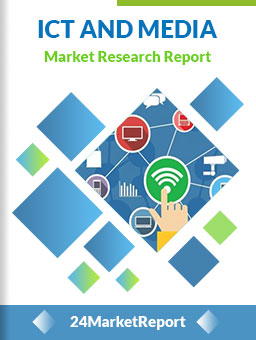
Download FREE Report Sample
Download Free sampleMARKET INSIGHTS
Global industrial park development, operation and management market size was valued at USD 29.51 billion in 2024. The market is projected to grow from USD 31.45 billion in 2025 to USD 45.38 billion by 2032, exhibiting a CAGR of 6.5% during the forecast period.
Industrial parks (IPs) and special economic zones (SEZs) are integrated business ecosystems designed to facilitate industrial growth and economic development. These complexes provide comprehensive infrastructure, including ready-to-use facilities, utilities management, logistics support, and business services through a single-window system. The development and operation of industrial parks encompass land acquisition, construction, tenant recruitment, ongoing facility management, and value-added services.
The market growth is driven by increasing government initiatives for industrialization, rising foreign direct investments in manufacturing sectors, and growing demand for integrated industrial infrastructure. Asia-Pacific dominates the market with over 40% share, led by China's aggressive industrial park development strategy. Recent trends include the development of smart industrial parks with IoT-enabled infrastructure and sustainable energy solutions. Major players like China Merchants Shekou and Jones Lang LaSalle are expanding their portfolios through strategic acquisitions and technology integration to meet evolving industry demands.
Growing Industrialization in Emerging Economies to Accelerate Market Expansion
The rapid industrialization across developing nations is creating substantial demand for organized industrial infrastructure. Countries like China, India, Indonesia, and Vietnam are witnessing manufacturing sector growth rates exceeding 6% annually, driving the need for integrated industrial parks. These facilities provide ready-to-use infrastructure, reducing setup costs and operational delays for businesses. The global industrial park market benefits from government initiatives like Make in India and China's Belt and Road projects, which allocate billions in funding for industrial zone development. Such strategic investments are fundamentally reshaping manufacturing landscapes and fueling demand for professional park management services.
Rising Demand for Sustainable Industrial Solutions to Propel Market Growth
To know more about market statistics, Download a FREE Sample copy
Sustainability has become a critical factor in industrial real estate development, with eco-industrial parks gaining significant traction globally. Modern facilities incorporating renewable energy systems, water recycling and waste-to-energy technologies command 15-20% premium occupancy rates compared to conventional parks. The global green industrial park market segment is projected to grow at nearly 9% CAGR through 2030, driven by corporate ESG commitments and tightening environmental regulations. Leading operators are retrofitting existing parks with solar arrays, smart grids and carbon capture systems to meet tenant sustainability requirements while improving long-term asset values.
The shift towards circular economy models presents additional growth avenues, with industrial symbiosis projects transforming waste from one tenant into raw materials for another. This closed-loop approach demonstrates how integrated park management creates both environmental and economic value.
High Initial Capital Requirements to Constrain Market Penetration
Industrial park development demands substantial upfront investment, with large-scale projects requiring $500 million to $2 billion in capital expenditure. The long payback periods, typically spanning 10-15 years, deter many potential entrants from the market. Land acquisition alone can consume 30-40% of total project costs in prime locations, while infrastructure development including roads, utilities and connectivity adds significant expense. These financial barriers concentrate market opportunities among large real estate investment trusts and sovereign wealth funds, limiting competitive dynamics in many regions.
Additional Constraints
Regulatory Complexities
Navigating zoning laws, environmental approvals and local compliance requirements often delays projects by 12-24 months. In some jurisdictions, overlapping agency jurisdictions and inconsistent policies create uncertainty that discourages investment.
Talent Shortages
The specialized nature of industrial park operations creates intense competition for skilled facility managers, engineers and sustainability experts. This talent gap is particularly acute in emerging markets where industrial real estate sectors are rapidly expanding.
Economic Volatility to Test Industrial Park Resilience
The industrial real estate sector faces mounting challenges from global economic uncertainties. Rising interest rates have increased financing costs by 200-300 basis points since 2022, while inflationary pressures drive up construction and maintenance expenses. Many manufacturing tenants are reevaluating expansion plans amid softening demand, potentially impacting occupancy rates. Industrial parks specializing in export-oriented industries must additionally navigate fluctuating trade policies and supply chain disruptions that affect tenant viability.
The sector must also address evolving workforce patterns, as hybrid work models reduce demand for some traditional industrial spaces while fueling need for last-mile logistics facilities. Park operators face the dual challenge of maintaining current portfolios while anticipating future spatial requirements in a rapidly changing industrial landscape.
Technology Integration to Unlock Next-Generation Industrial Parks
The convergence of industrial real estate with digital technologies presents transformative opportunities. Smart industrial parks incorporating IoT sensors, AI-powered facility management and autonomous logistics systems can achieve 20-30% gains in operational efficiency. The global market for smart industrial park technologies is forecast to exceed $12 billion by 2027, with Asia-Pacific leading adoption. Early adopters are implementing predictive maintenance systems that reduce equipment downtime and energy management platforms optimizing power consumption across tenant facilities.
Advanced manufacturing technologies like 3D printing and robotics are also reshaping spatial requirements, creating demand for flexible industrial spaces with reinforced flooring, high power capacity and specialized ventilation systems. Forward-looking park operators are redesigning facilities to accommodate these emerging production methods while offering shared technology infrastructure to reduce tenant investment costs.
Buildings and Facilities Segment Dominates Due to Infrastructure Development Focus
The market is segmented based on type into:
Buildings and Facilities
Subtypes: Warehouse spaces, Manufacturing plants, Office complexes, and others
Management Services
Financial Services
Others
Enterprise Segment Leads Through Business Expansion Needs
The market is segmented based on application into:
Government
University
Enterprise
Integrated Operations Gaining Traction for Comprehensive Solutions
The market is segmented based on service model into:
Development Services
Operation Services
Management Services
Integrated Services
Strategic Partnerships and Regional Expansion Drive Market Competition
The global industrial park development, operation, and management market features a diverse mix of multinational conglomerates, regional specialists, and emerging players, creating a dynamic competitive environment. Leading firms are increasingly capitalizing on smart infrastructure and sustainable development initiatives to distinguish themselves in a rapidly evolving market expected to reach $45.38 billion by 2032. Market differentiation is particularly evident in how companies integrate digital solutions with traditional industrial park operations.
Jones Lang LaSalle (JLL) and CBRE Group currently dominate the Western markets, leveraging their extensive portfolios of managed industrial properties and value-added services. JLL's 2023 acquisition of a European logistics park operator strengthened its position in the high-growth e-commerce fulfillment sector, while CBRE's Asia-Pacific industrial park portfolio grew by 18% last year through strategic joint ventures.
Asian competitors China Merchants Shekou Industrial Zone Holdings and Zhongnan Group are rapidly expanding their influence through government-backed special economic zone projects. Their integrated service models combining infrastructure development with financial services captured over 25% of the Asian market share in 2024. Meanwhile, Japanese conglomerate Mitsui Fudosan differentiates itself through advanced eco-industrial park concepts that prioritize renewable energy integration.
The market is witnessing increased competition in developing regions, where firms like Cushman & Wakefield and Savills are competing with local players through technology-driven facility management solutions. Recent innovations include IoT-enabled utility monitoring systems and AI-powered security platforms that are becoming standard offerings for premium industrial parks. Smaller operators are gaining traction by specializing in niche sectors such as pharmaceutical campuses or cold chain logistics hubs.
Jones Lang LaSalle (U.S.)
CBRE Group (U.S.)
Cushman & Wakefield (U.S.)
Savills (U.K.)
Colliers International (Canada)
Newmark Group (U.S.)
Mitsui Fudosan (Japan)
Segro (U.K.)
Mitsubishi Estate (Japan)
Henderson Land Development (Hong Kong)
Samsung C&T (South Korea)
Zhongnan Group (China)
The industrial park market is undergoing a significant transformation with the rise of sustainable and smart industrial parks, driven by stringent environmental regulations and corporate sustainability goals. Governments and private developers are increasingly investing in eco-friendly infrastructure, renewable energy integration, and waste management systems within industrial parks. For instance, over 60% of new industrial park projects in Asia now incorporate green building certifications, while IoT-enabled energy management systems are becoming standard in North America and Europe. This shift is not only reducing operational costs for tenants but also aligning with global ESG (Environmental, Social, and Governance) compliance requirements.
Integration of Advanced Technologies
The adoption of Industry 4.0 technologies is reshaping industrial park operations, with AI-driven security systems, predictive maintenance for infrastructure, and digital twin simulations gaining traction. Automated logistics hubs within parks now account for nearly 35% of newly developed facilities globally, significantly improving supply chain efficiency. Furthermore, 5G-enabled smart parks are becoming hubs for tech-driven manufacturing, attracting high-value tenants from sectors like electric vehicle production and semiconductor manufacturing.
A growing trend toward sector-specific industrial clusters is driving demand for specialized park management services. Pharmaceutical parks in India, automotive hubs in Mexico, and tech parks in Vietnam are demonstrating 20-30% higher occupancy rates compared to general-purpose industrial zones. This specialization allows for shared infrastructure tailored to industry needs, from specialized waste treatment facilities in chemical parks to high-power grid connections in data center parks. The cluster approach is proving particularly effective in emerging markets, where it helps overcome local infrastructure limitations through concentrated investments.
North America
The North American market leads in technological integration and sustainable industrial park development. Over 60% of new industrial parks in the U.S. incorporate smart technologies such as IoT-based energy management systems, driven by stricter environmental regulations and corporate sustainability goals. Major logistics hubs like Chicago, Dallas, and Southern California continue to attract significant investments, with private equity firms accounting for nearly 45% of all industrial real estate transactions in 2023. Canada's focus on clean energy industrial parks, particularly in Alberta and Ontario, is creating new opportunities in renewable energy manufacturing clusters. However, rising land acquisition costs and skilled labor shortages pose challenges for rapid expansion.
Europe
European industrial parks emphasize circular economy principles and energy efficiency, with Germany and the Netherlands pioneering carbon-neutral industrial zones. The EU's industrial strategy prioritizes the conversion of brownfield sites into modern industrial parks, with over €20 billion allocated for such transformations by 2030. Western Europe's mature markets focus on high-value manufacturing parks, while Eastern Europe attracts automotive and electronics manufacturers through cost-competitive SEZs. Strict EU zoning laws and community opposition to industrial expansion near residential areas are slowing growth in some regions. Public-private partnerships account for 70% of new park developments, reflecting the blended financing models gaining traction.
Asia-Pacific
Asia dominates global industrial park development with China alone hosting over 2,500 operational industrial parks, including mega-projects like the Suzhou Industrial Park. India's National Industrial Corridor Development Program aims to develop 11 industrial corridors by 2025, with Japanese investment playing a pivotal role. Southeast Asian nations (Vietnam, Thailand, Indonesia) are attracting manufacturers diversifying from China, creating demand for ready-built factories with integrated logistics. While traditional manufacturing parks still prevail, high-tech eco-industrial parks now represent 25% of new developments in developed Asian markets. Bureaucratic hurdles and inconsistent policy implementation remain barriers for foreign operators.
South America
Industrial park development in South America shows uneven progress, with Brazil and Chile leading in modern logistics-oriented parks. The Manaus Free Trade Zone continues to drive 30% of Brazil's industrial output through tax incentives, while Argentina focuses on agribusiness processing parks. Infrastructure gaps and volatile economic policies discourage large-scale private investment in most countries. Recent growth comes from specialized parks: Colombia's pharmaceutical clusters and Peru's mining support industrial zones show promise, though less than 15% of regional parks offer comprehensive management services, indicating significant unmet demand.
Middle East & Africa
Gulf Cooperation Council (GCC) nations dominate regional growth with Dubai Industrial City attracting over 800 manufacturers and Saudi Arabia's 40+ economic cities under Vision 2030. Morocco's Tangier Automotive City demonstrates successful African industrialization, while Ethiopia's Hawassa Industrial Park anchors East African textile manufacturing. Sub-Saharan Africa faces challenges including inadequate utilities and complex land tenure systems, though Chinese-built industrial parks account for 60% of new developments in the region. Energy-intensive industries cluster near resource deposits, while coastal parks serve export markets, creating distinct development patterns across the region.
This market research report offers a holistic overview of global and regional markets for the forecast period 2025–2032. It presents accurate and actionable insights based on a blend of primary and secondary research.
✅ Market Overview
Global and regional market size (historical & forecast)
Growth trends and value/volume projections
✅ Segmentation Analysis
By product type or category
By application or usage area
By end-user industry
By distribution channel (if applicable)
✅ Regional Insights
North America, Europe, Asia-Pacific, Latin America, Middle East & Africa
Country-level data for key markets
✅ Competitive Landscape
Company profiles and market share analysis
Key strategies: M&A, partnerships, expansions
Product portfolio and pricing strategies
✅ Technology & Innovation
Emerging technologies and R&D trends
Automation, digitalization, sustainability initiatives
Impact of AI, IoT, or other disruptors (where applicable)
✅ Market Dynamics
Key drivers supporting market growth
Restraints and potential risk factors
Supply chain trends and challenges
✅ Opportunities & Recommendations
High-growth segments
Investment hotspots
Strategic suggestions for stakeholders
✅ Stakeholder Insights
Target audience includes manufacturers, suppliers, distributors, investors, regulators, and policymakers
-> Key players include Jones Lang LaSalle, CBRE, Cushman & Wakefield, Savills, Colliers International, Newmark Group, and China Merchants Shekou Industrial Zone Holdings, among others.
-> Key growth drivers include rising industrialization, government incentives for SEZs, infrastructure development, and demand for integrated industrial ecosystems.
-> Asia-Pacific dominates the market due to rapid industrialization, while North America shows significant growth in smart industrial parks.
-> Emerging trends include eco-industrial parks, digital twin technologies, renewable energy integration, and AI-powered facility management.

Speak to our Custom Research Team and get the Custom Research in a budget
Custom ResearchFrequently Asked Questions ?
A license granted to one user. Rules or conditions might be applied for e.g. the use of electric files (PDFs) or printings, depending on product.
A license granted to multiple users.
A license granted to a single business site/establishment.
A license granted to all employees within organisation access to the product.
Upto Working 24 to 48 hrs
Upto 72 hrs max - Weekends and Public Holidays
Online Payments with PayPal and CCavenue
Wire Transfer/Bank Transfer
Hard Copy



 Industry Market Size
Industry Market Size SWOT Analysis
SWOT Analysis Industry Major Players
Industry Major Players Revenue Forecasts
Revenue Forecasts Historical and Forecast Growth
Historical and Forecast Growth Profitability Analysis
Profitability Analysis
























